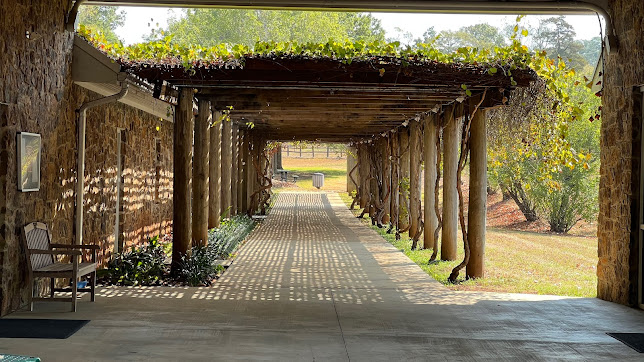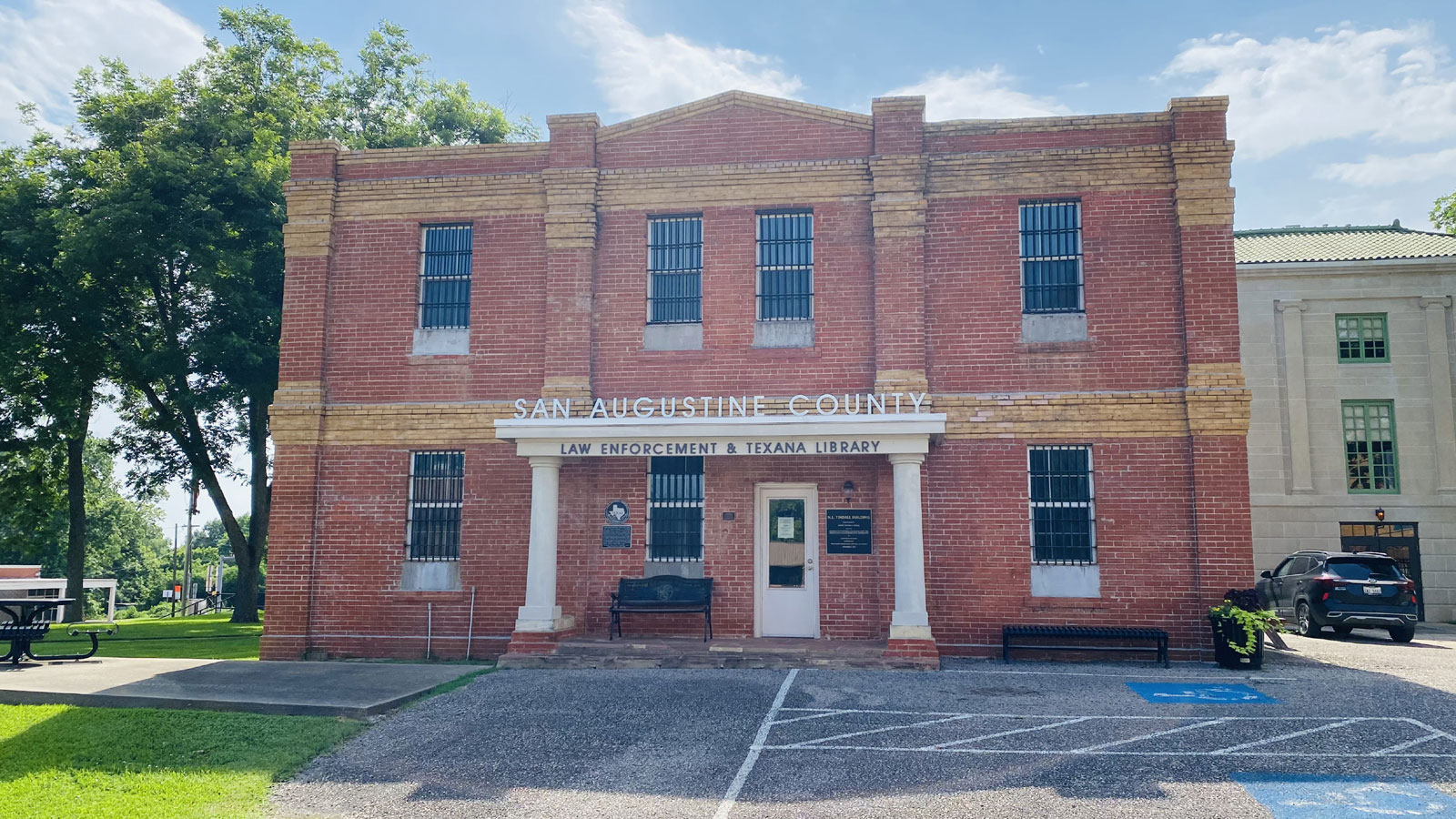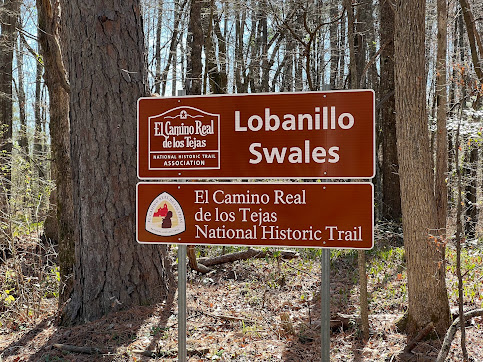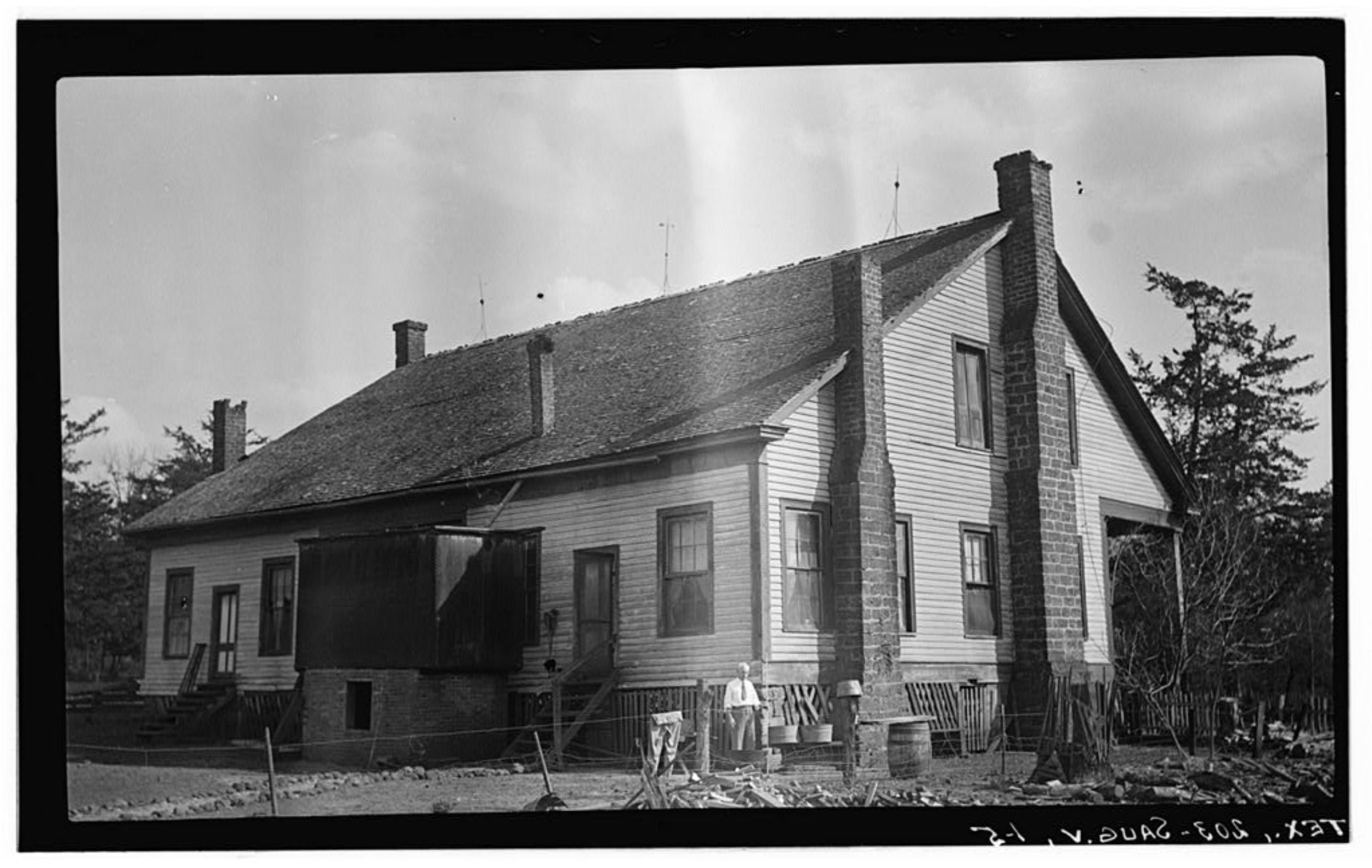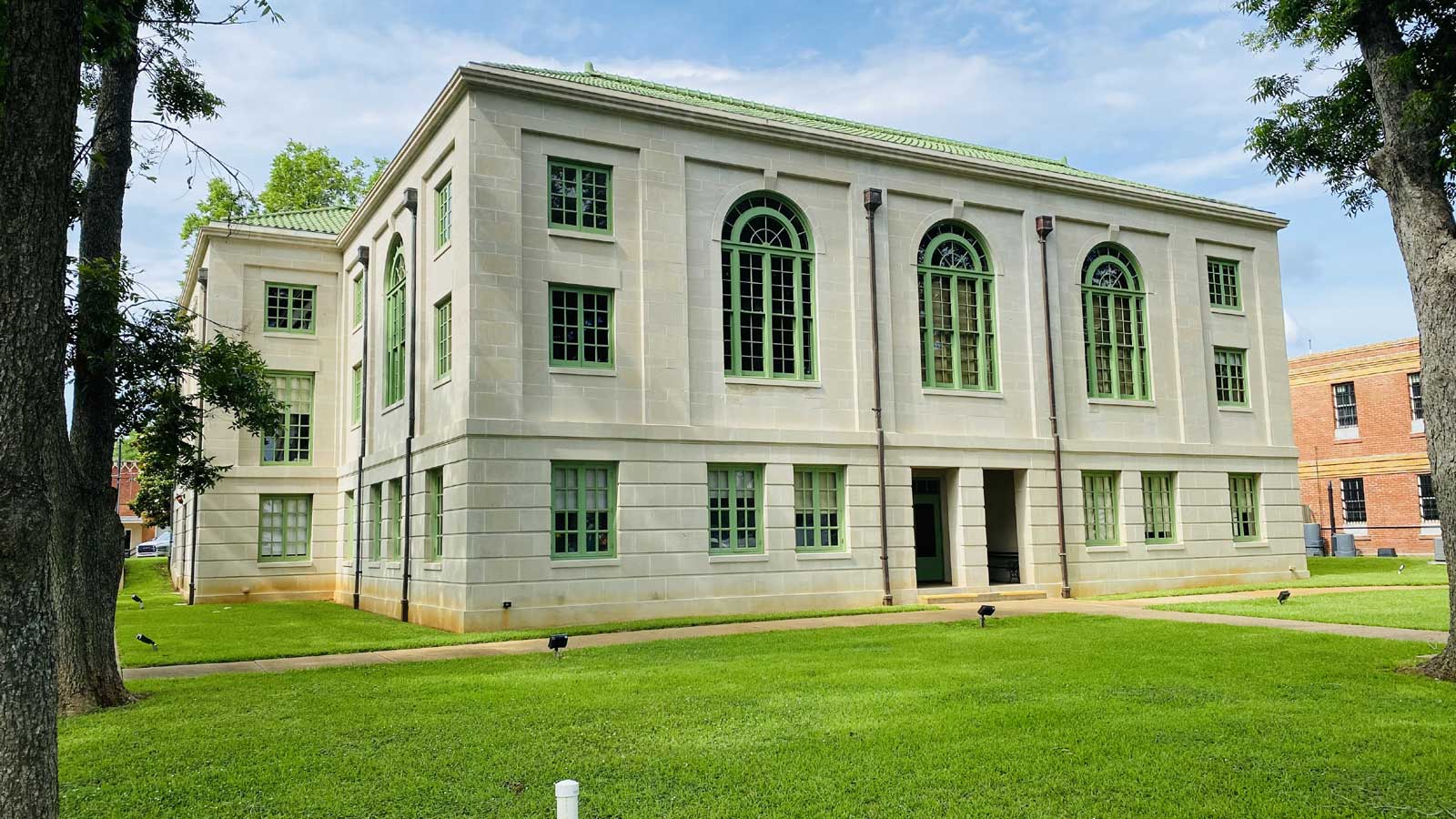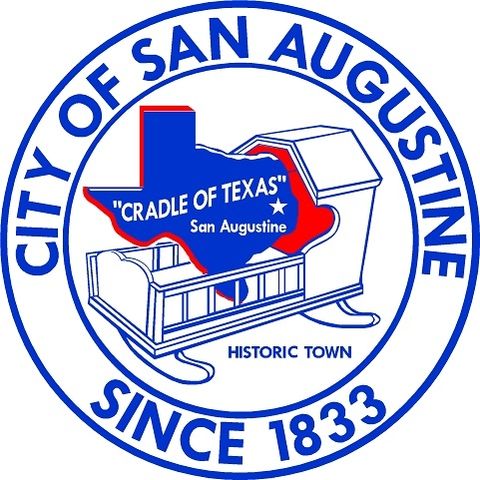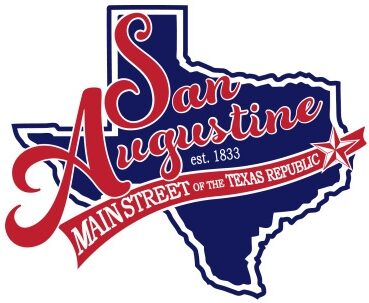Texas Firsts in San Augustine
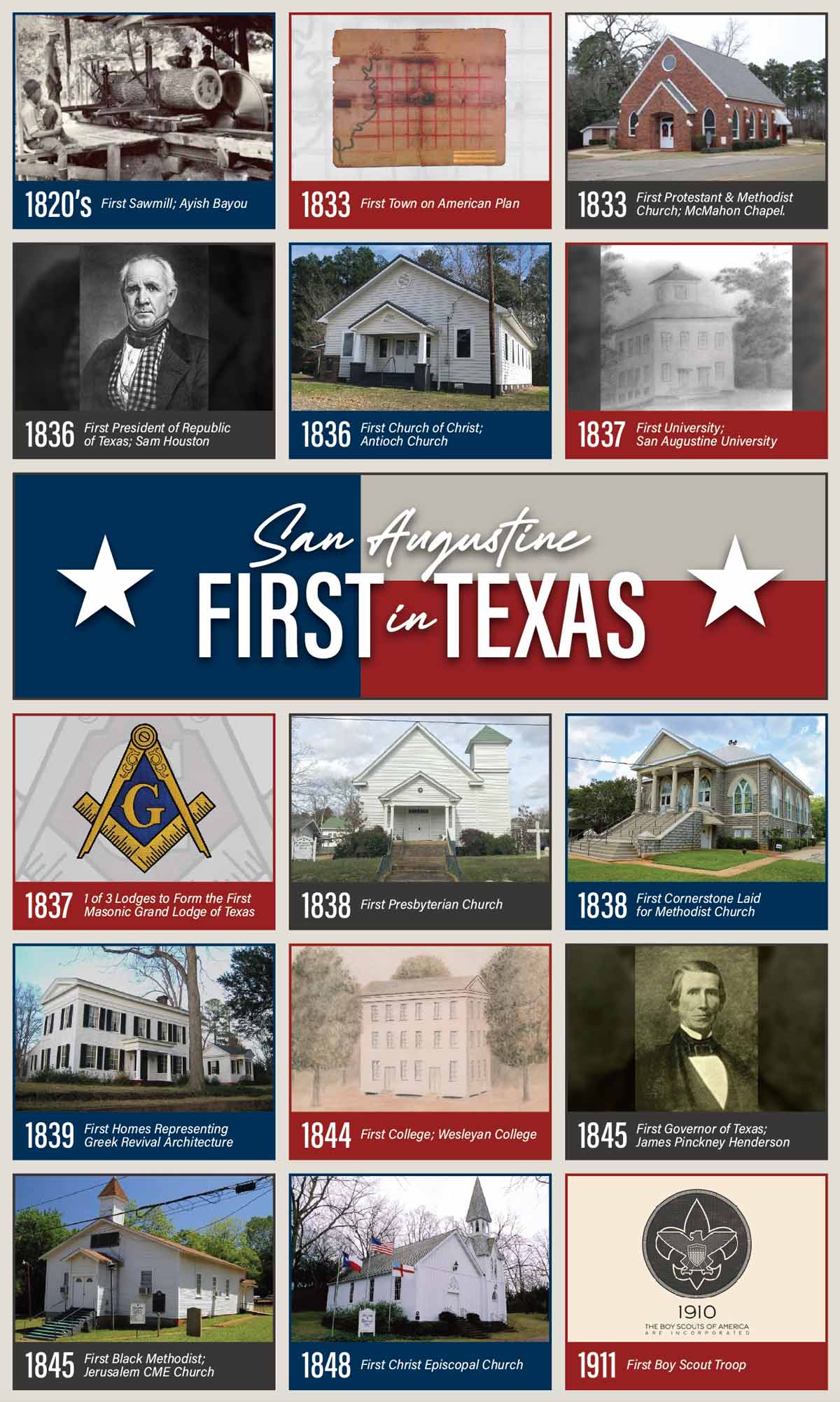
- One of six earliest Spanish missions, the Mission Nuestra Senora de los Dolores de los Ais, 1717 to 1773. Site listed on the National Register of Historic Places and designated a State Archaeological Landmark.
- Base of operations for Philip Nolan, notorious filibusterer and mustanger, said to have been the first white man to map Texas.
- First town in Texas settled entirely by English-speaking immigrants from the United States.
- First town in Texas laid out on the American grid plan, organized 1832. Authorized under Mexican Law as the Municipality of San Augustine in 1834.
- Sam Houston’s first house in Texas. Houston was first appointed General and Commander-in-Chief in San Augustine, and was first elected to public office representing this district.
- One of three communities to which William Travis sent his desperate “Victory or Death” letter from the Alamo.
- The first Methodist church in Texas. McMahan’s Chapel, established September 1833 within the Municipality of San Augustine, was Texas’s first Methodist church having a continuous record of unbroken service from its beginning.
- The first African-American church of record in Texas, Jerusalem Christian Methodist Episcopal Church, organized by 1845 as the Church on the Branch. Present building 1943.
- Site of one of the first three custom houses marking the official entry points into the Republic, along with those at Goliad and Matagorda.
- Site of the first university in Texas, San Augustine University, chartered 1837. Home of the first governor of the State of Texas, James Pinckney Henderson, former Ambassador to England and France from the Republic of Texas.
- The first church of Christ congregation in Texas, led by Dr. William Defee, began meeting in 1833 and was established as Antioch Church of Christ in 1836. Present building 1938.
- The first mainline Old School Presbyterian church in Texas. Memorial Presbyterian Church, founded as Bethel Presbyterian Church in 1838. Present building 1887.
- The first Episcopal church in East Texas. Christ Church Episcopal, founded 1848 through the offices of Frances Cox Henderson, wife of Governor James Pinckney Henderson. Present building 1870.
- One of the first three Masonic Lodges involved in the founding of the Grand Lodge of Texas. Organized as McFarland Lodge in 1837. Renamed Red Land Lodge. Present building, 1910.
- The first Boy Scout troop in Texas. Troop #1 was organized in 1911 by Reverend George L. Crocket, Rector of Christ Church Episcopal, historian, educator, and artist.
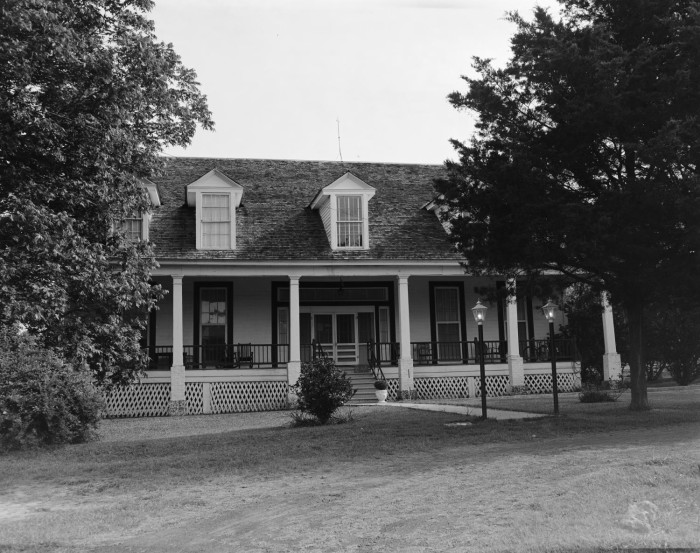
The History of Our Great City
San Augustine had its beginning in 1716 when Father Antonio Margil de Jesus established a mission among the Ais Indians who inhabited the area. Mission Nuestra Senora de los Dolores de los Ais, one of the six missions established by the Spaniards to serve as a buffer for the northern frontier, was abandoned in 1719 because of threats of a French invasion. It was re-established in 1721 on the east bank of the Ayish Bayou by the Marquis de Aguayo. It was permanently abandoned in 1773 when the Spanish abandoned all missions in East Texas.
About 1794 Antonio Leal and his wife Gertrudis de los Santos settled at the old mission site. Leal was in partnership with Philip Nolan to capture and sell wild horses and mustangs. Leal’s place was used for collecting and pasturing the horses before they were sent to Louisiana to be sold. Philip Nolan, having aroused the suspicion of the Spanish authorities, was killed while resisting arrest on March 21, 1801. Antonio Leal and his wife were arrested as Nolan’s accomplices and deported to Bexar. At this time, 1801, Antonio Leal transferred his title to the land to Edmund Quirk. This marked the beginning of rapid Anglo settlement in the area known as the Ayish Bayou District.
The Pioneers called “Texians” began arriving in this district as early as 1802. Settlers here lacked the protection of the empresario system that fostered other colonies. With no Spanish Government office closer than Nacogdoches, the settlers cobbled together ways to worship, mete out justice, teach their children, and conduct social life. Their system conformed minimally to Spanish law but allowed the citizens to exert their sturdy American individualism. Left on their own, they quietly fashioned this place into a likeness of the country they had left. It might be said that this small group brought an early form of self- government to a Texas destined to rebel in that direction.
Sam Houston conducted business in early San Augustine and even built a house in town. He was first appointed General and Commander-in-chief of the Texas Armies here. His aide-de-camp, Alexander Horton, was a San Augustinian. An indispensable comrade during the war for Texas Independence, Horton became Houston’s lifelong friend.
General Houston returned to the home of another close friend, his business partner Philip Sublett, to recover from the wound he received at San Jacinto. His official report of the battle was written and filed from San Augustine.
Sam Houston was nominated President of the Texas Republic here, and he further represented the people of this district in the Fourth and Fifth Congresses. Houston continued to return to San Augustine whenever he needed refuge or support.
In 1832 a mass meeting of settlers from the Ayish Bayou District decided that “a permanent place for holding court, and for trade and commerce was necessary.” A committee of fifteen, including William McFarland, was appointed to select a location for the new town. They selected the site of the old mission which belonged at that time to Thomas S. McFarland, William’s son. Thomas S. McFarland was appointed by the committee to survey and lay out the town of San Augustine. The name of the town was derived from the Presidio de San Agustin de Ahumada, named in honor of the viceroy of Texas, Agustin de Ahumada, Margues de las Amarillas.
Thus, the town of San Augustine was laid off on the eastern bank of the Ayish Bayou and on either side of the San Antonio road (El Camino Real). It contained 48 blocks, divided into 356 lots with two lots reserved in the center for a public square. It was the first town on the old San Antonio Road after crossing the Sabine.
Since most of the anglo settlers came overland, they entered Texas near San Augustine, making it the eastern gateway to the great Southwest. With its population increasing rapidly, it early became progressive and, in fact, one of the most important towns in the Republic of Texas.
San Augustine is extremely proud of her place and her people in the history of this great state. San Augustine was home to two governors: J. Pinckney Henderson, the first governor of Texas whose home still stands, and O. M. Roberts, who served as governor from January 21, 1879, until January 16, 1883.
K. L. Anderson, who served as Vice-President of the Republic of Texas, practiced law here in San Augustine where he also served as Collector of Customs. He also served as Speaker of the House of Representatives prior to this election as Vice President.
John A. Greer, who had previously served as speaker of the House of Representatives, was elected Lt. Governor of Texas in 1845 and served until 1853. He died on July 4, 1855, and was buried at his home nine miles northwest of town. His remains were moved to the State Cemetery in 1929. Ben Ramsey served as Lt. Governor of Texas for seventeen years prior to his election to the Railroad Commission.
San Augustine has had three men serve as foreign ambassadors: Memucan Hunt represented the Republic as minister at Washington prior to annexation and J. Pinckney Henderson served as ambassador to France. Edward A. Clark served as U.S. Ambassador to Australia.
Franklin B. Sexton, whose home here still stands, represented Texas in the Congress of the Confederate States of America; and S. W. Blount, whose home here has been restored, served as fiscal agent for the Confederate States of America. Stephen W. Blount, who was one of the signers of the Texas Declaration of Independence, is buried here in the City Cemetery.
San Augustine, “the Cradle of Texas,” was known early as an education center and the birthplace of Protestant religion in Texas. It was the home of three universities, including the first to open its doors in Texas- the University of San Augustine which was chartered in 1837.
Ezekiel Cullen, whose home serves as headquarters for the annual Tour of Homes, was known as the Father of Education in Texas. While serving in the House of Representatives of the third congress of Texas (Republic), he was responsible for the laws enacting public education in this great state.
Gen. Thomas J. Rusk, who maintained a law office here was guest speaker when the Methodist laid their cornerstone on January 17, 1838. It was the first cornerstone laid for a Protestant church west of the Sabine.
The footprints in the sands of time are truly deep in San Augustine. We welcome you to share our past, enjoy the present, and invite you to join us in looking forward to the future.
El Camino Real
Like jewels on a chain, three towns on The El Camino Real trail exemplify the influence of three nations in the shaping of texas: San Augustine, Natchitoches, and Nacogdoches
The King’s Highway (Highway 21) was laid across Texas in 1691. Following buffalo trails and the routes of native Americans, this road reached from Los Adaes in Louisiana to Mexico City. It was the vital artery connecting Spain to her farthest flung outposts, one of which was Mission Dolores de los Ais on San Augustine’s Ayish Bayou. The Spaniards and the French that marked the trail were followed by such men as Moses Austin and his son Stephen Fuller Austin (The Father of Texas), Jim Bowie, Davy Crockett, Sam Houston, and early missionaries of multiple faiths. Later this road became the overland route and gateway into Texas from the United States.
Visit the El Camino Real de los Tejas Travel Information Center
701 5. Broadway, San Augustine
Letters About San Augustine
“The Society is as good as in any portion of Tennessee. There seems to be as much refinement as you meet with at any place.”
- Letter from Martha Hall Sharp, daughter of Governor Hall of Tennessee, written from San Augustine, May 14, 1849.
“In matters of government, we are perfectly at peace. We have a code of Law by men of our own choosing and which is sanctioned by the Spanish government by which justice is generally administered in a short way to the satisfaction of the parties. We have a meeting house where we have preaching almost every Sunday. We have a Female Academy in our town.”
- Letter from San Augustine to Tennessee, written by Isaac Holman, Law Partner of Henry Clay, April 7, 1835.
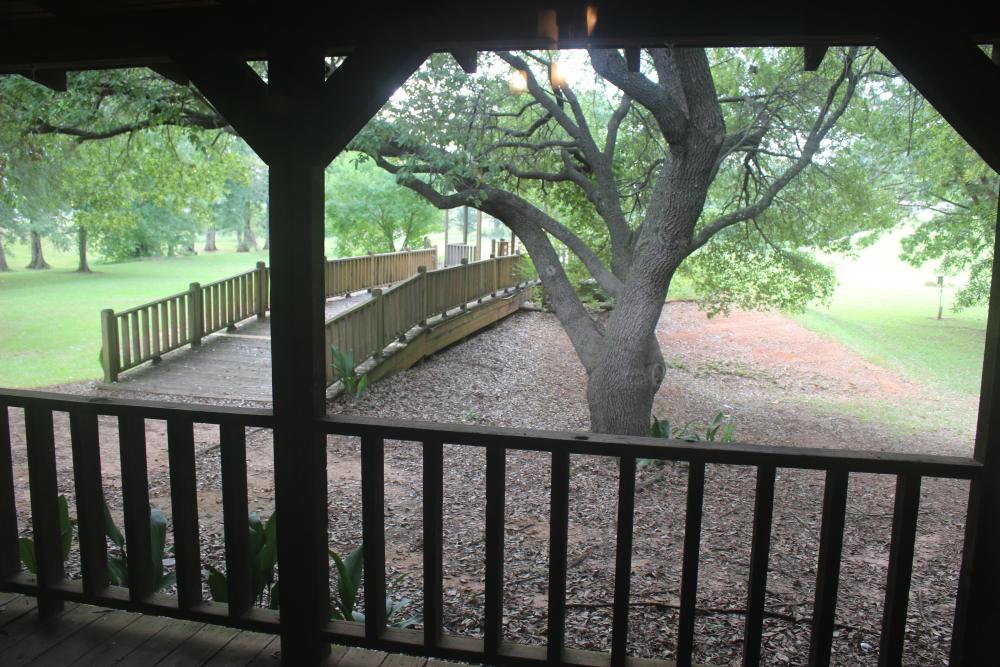
Come... Remember… Imagine
When you visit old San Augustine, you leave traffic snarls and jangled nerves behind. You dream again among ancient trees, clapboard churches, gracious homes and rough log cabins dating from the beginnings of Texas.
Imagine the day Sam Houston rode out El Camino Real (Highway 21) in a fine carriage, bringing his new wife, Margaret Lea, to meet his friends at Philip Sublett’s house.
One the way the couple passed the home of Matthew Cartwright, looking exactly as it does today-even the out- buildings are preserved. They rode into countryside that lit the springtime with wild azaleas, dogwood and redbud, just as it does today. And in the fall, the forests that enfold this landscape flared then, as now, into a brilliance rivaling New England’s against gently rolling hills as green as Ireland’s.
Driving further on El Camino Real, later called the Old San Antonio Road, Sam and Margaret would have passed the small burial ground dating from 1826, on a rise called Chapel Hill. Drive this way yourself and walk among the gravestones. As in other San Augustine cemeteries, very early settlers rest here. The stones name veterans of eight wars, including the American Revolution, the War of 1812, the War for Texas Independence, and the Civil War. Standing beside the little church, facing the landscape Houston knew, you’ll experience a quiet rarely known in our crowded world. Wind ruffling the leaves of the old trees that shade the graves will seem to bear a ghostly fife note, a signal whistle, or the thin strains of an antique hymn.
As you pass the Sublett place, still occupied by descendants of Houston’s closest friend, imagine the celebrations when Sam brought Margaret to San Augustine. Imagine the laughter, the dancing, the socials held in town for the newlyweds. Important lawmakers and heroes attended, in the days when the future began right here.
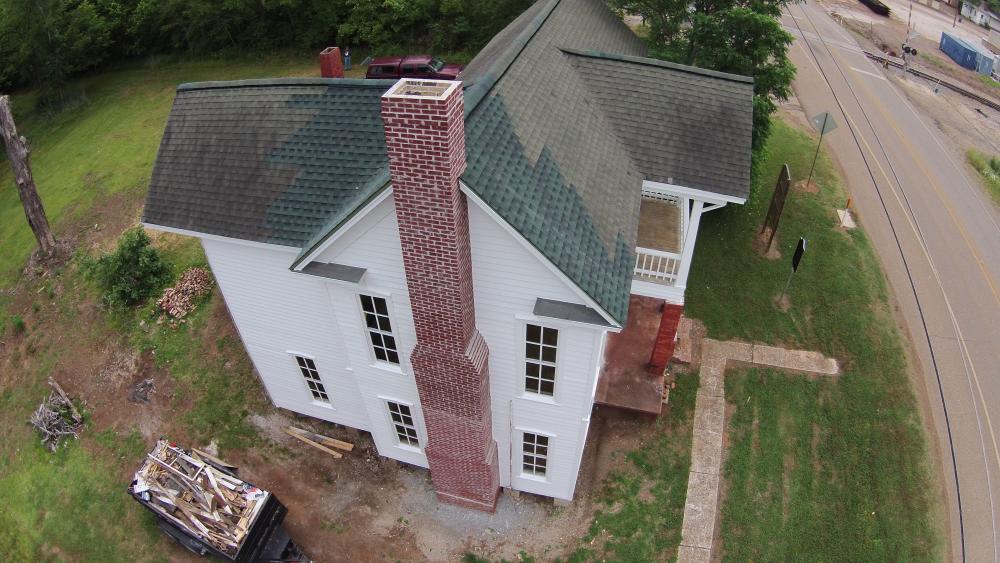
Discover the Roots of Texas History On Your Own!
San Augustine County Records: Now digitized and indexed, the priceless county records are a vital source of information for professional historians, families, and history buffs. The touch of a few keys can bring to view court cases, land transactions and other documents of the recorded history of early Texas. San Augustine is the first county in Texas to create such a resource. One of the earliest documents dates to February 19, 1800.
The Mission Dolores Center Archive: this resource offers, to the amateur or professional researcher, materials gathered from archival centers in Texas, Louisiana, California, Arizona, Mexico and Spain, documenting and interpreting the mission. Picnic facilities and 32 RV camping spaces are available on the beautiful grounds.
The San Augustine Public Library: our local library welcomes history enthusiasts and family researchers to its large Texas History Collection and Genealogical Center, featuring extensive census and cemetery records of early settlers, books on Texas, and family records, including a system of individual family files.
